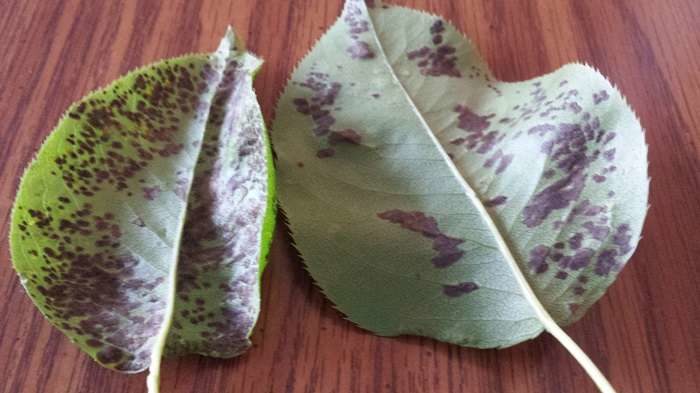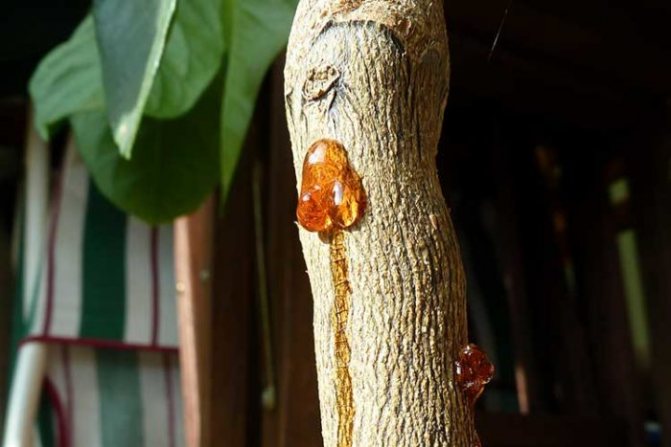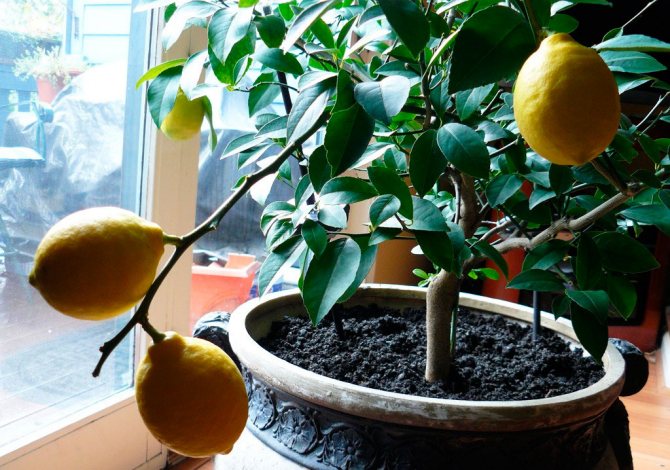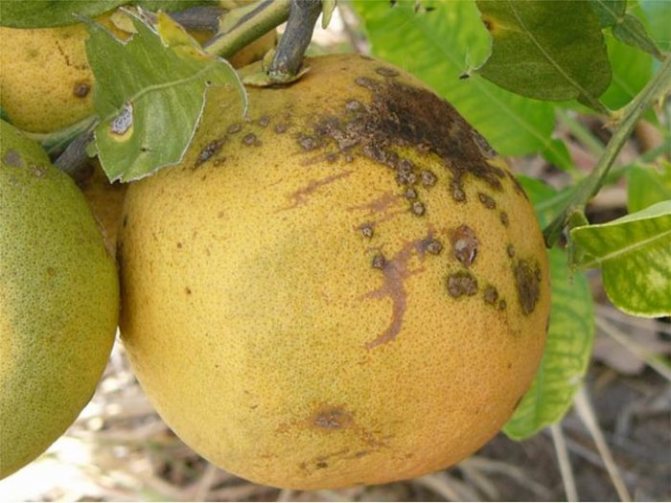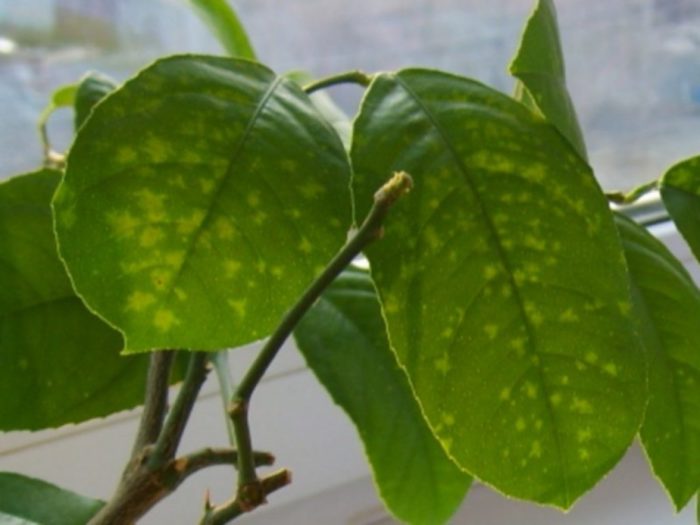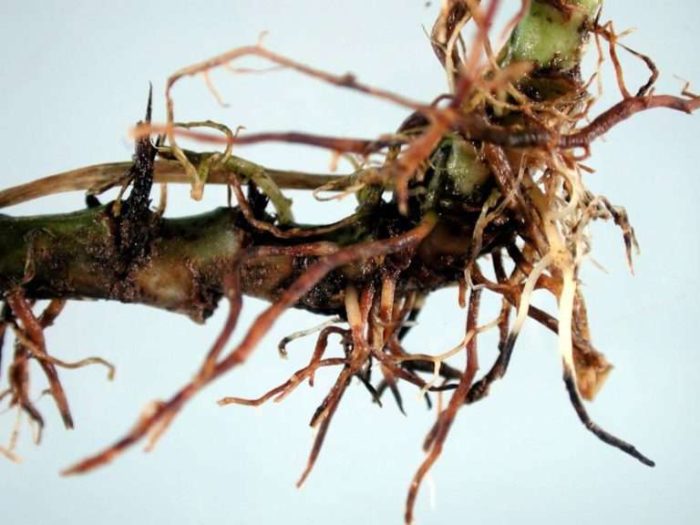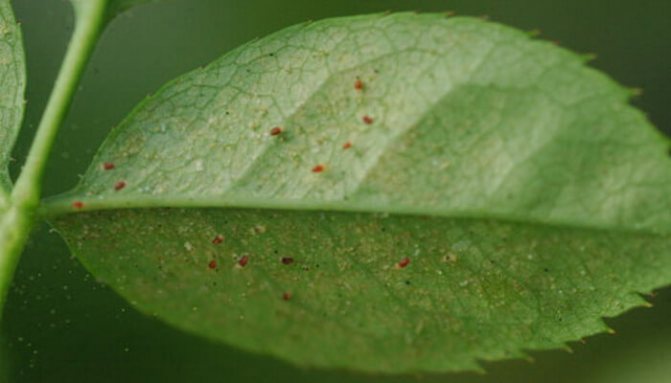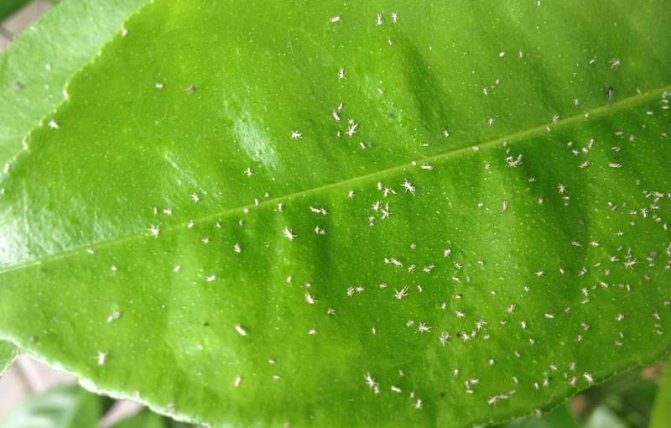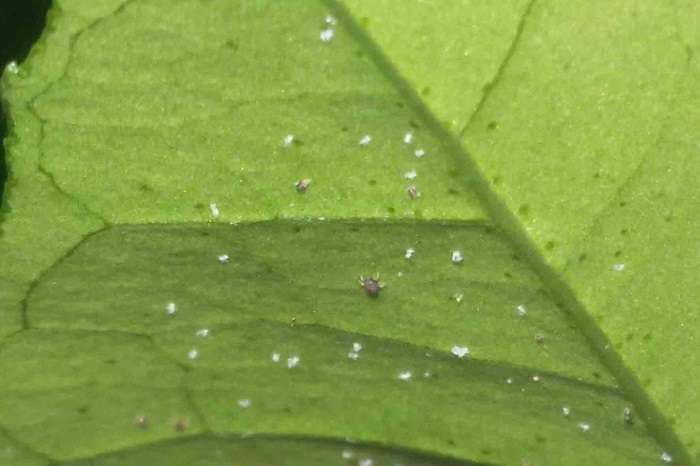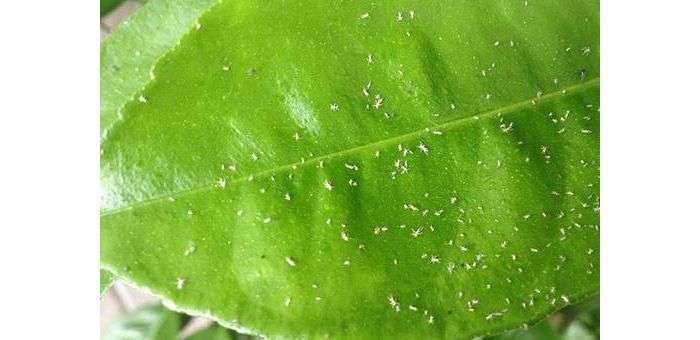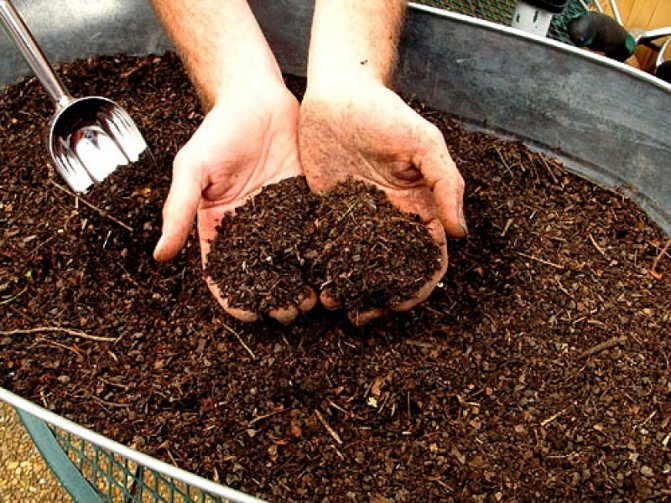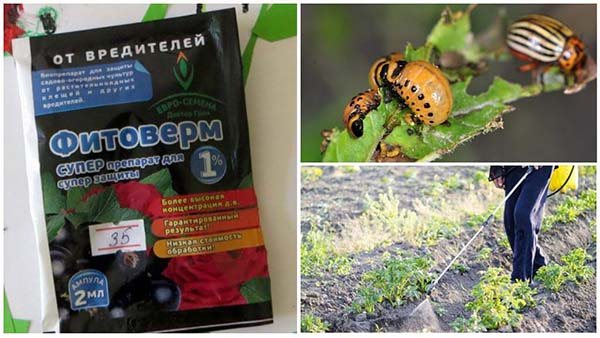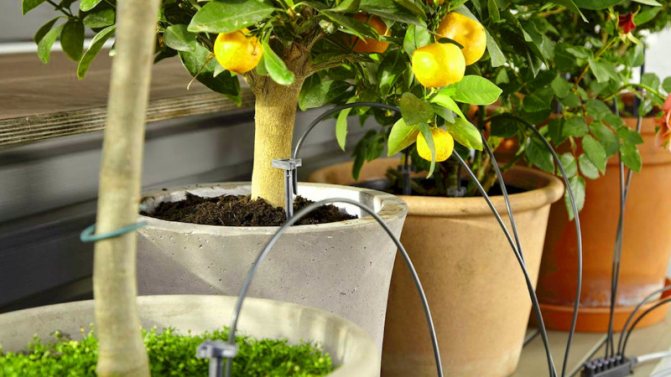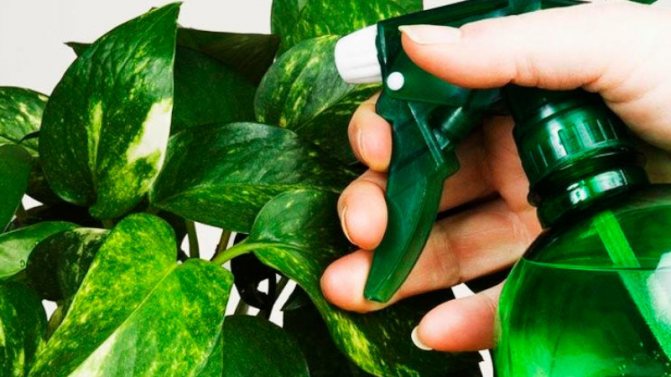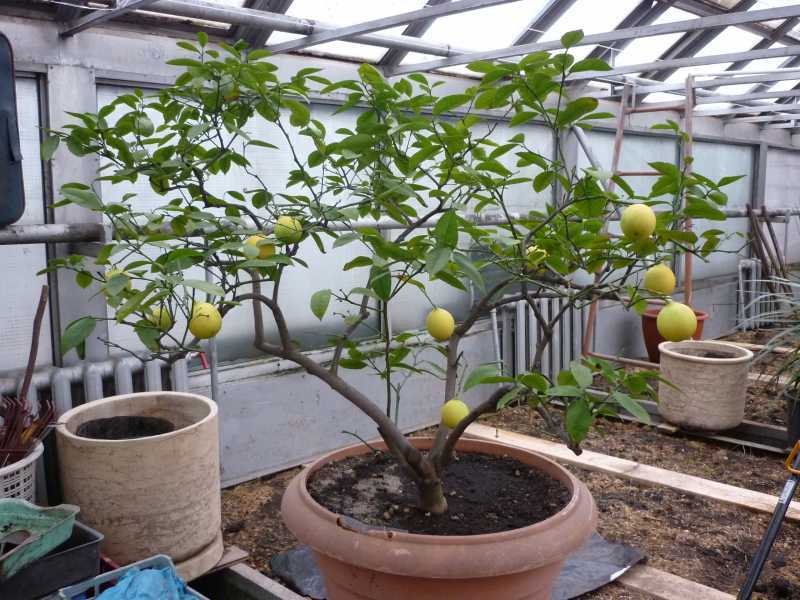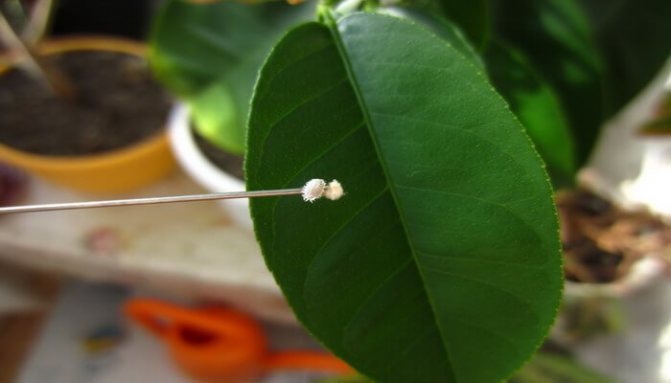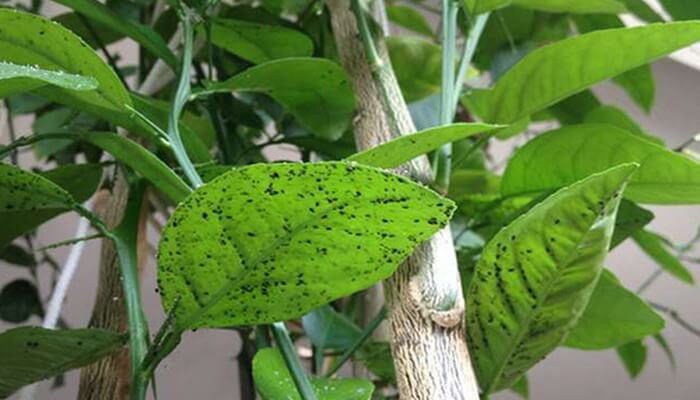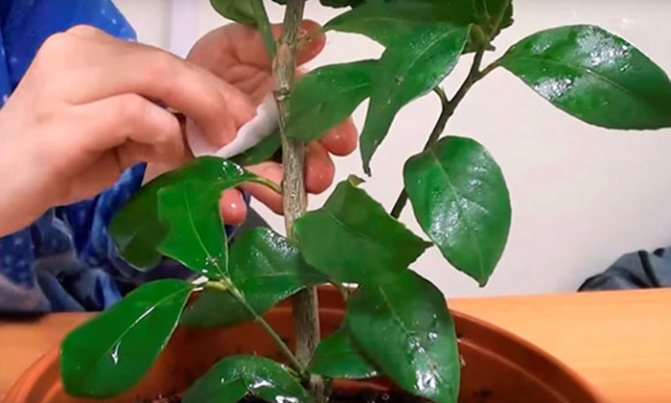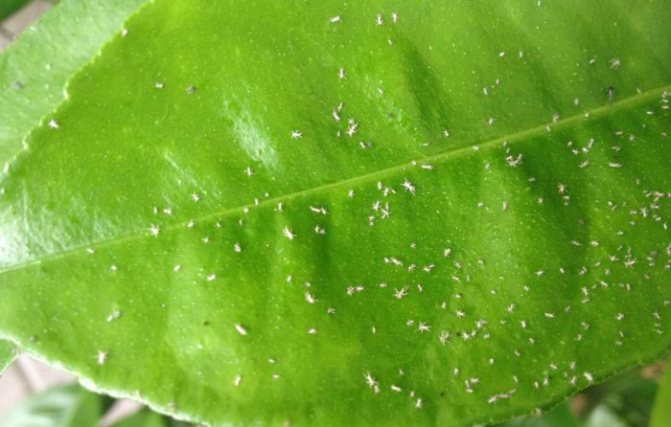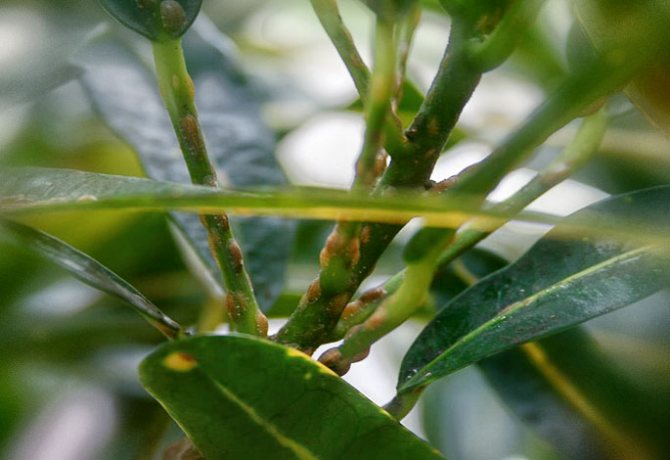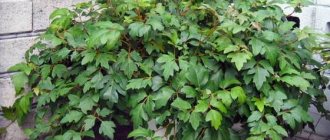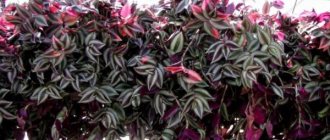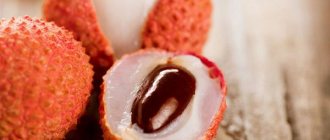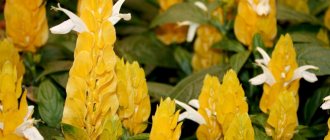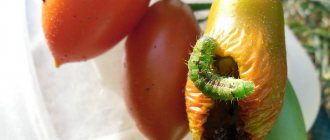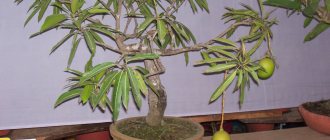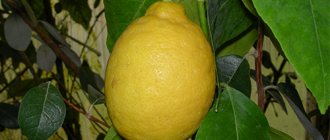Homemade lemon diseases - causes and treatment
Before starting the treatment of indoor lemon diseases, you need to find out the reason why they appeared. It is important not only to engage in treatment, but also to immediately eliminate the factors that provoked the development of diseases.
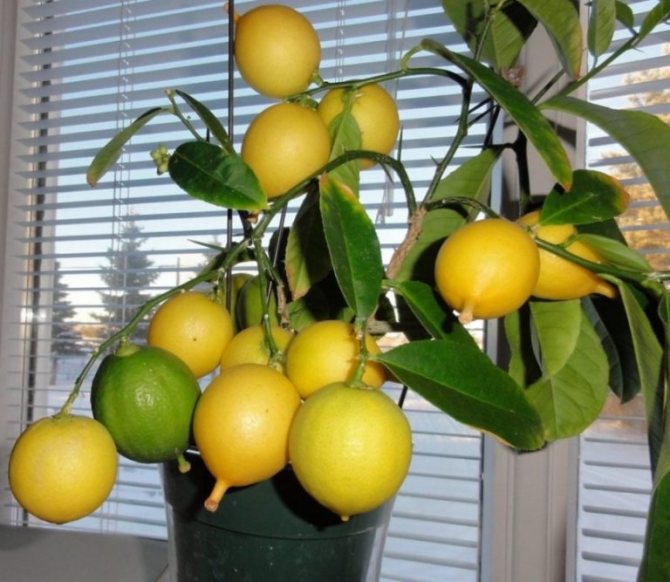
Room lemon
Why do lemon leaves turn yellow
Having made the decision to grow lemons at home, you need to be prepared for the fact that the tree will often hurt if you do not create ideal conditions for it. Diseases of lemon home, causes and treatment are always interrelated factors.
The reasons for the development of diseases:
- Improper growing conditions (watering, lack or excess of sunlight, indoor humidity, and other factors).
- Errors were made during the landing or transfer.
- The soil or container was contaminated prior to planting.
- The appearance of pests at home and on other indoor plants.
- Fungal spores, viruses and bacteria can enter the house when ventilated.
Often the cause is a lack of nutrients in the soil.
Lemon leaf chlorosis
Chlorosis of the leaves is one of the common diseases that develops due to improper watering, lack of iron and nitrogen in the soil and increased acidity of the soil.
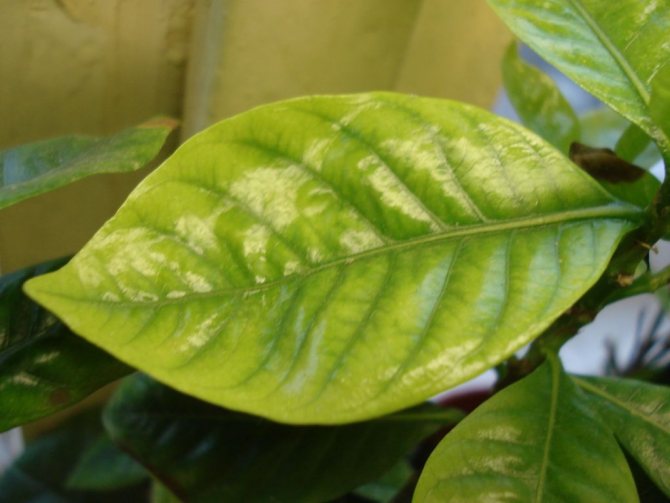

Chlorosis of leaves
Symptoms of this indoor lemon disease:
- The leaves turn yellow and bloom deformed.
- The foliage begins to fall off profusely.
- The top dries.
- The dying off of the roots begins.
Treatment consists in the introduction of root and foliar dressings.
Additional Information! To saturate the soil with iron, the soil is watered with copper sulfate.
Feeding with the following components is also effective:
- antichlorosis;
- iron chelate;
- ferrilene;
- ferovit.
Fertilizers are applied according to the instructions on the package.
Why do lemon leaves curl?
Reasons for curling foliage:
- sooty fungus;
- gommosis;
- lack of nutrients;
- aphid;
- thrips.
Spraying with garlic broth, wiping the leaf plate with soapy water and a warm shower helps from aphids and thrips. Treatments with chemicals are effective.
Also, the leaves curl due to the deficiency of copper and calcium in the soil. Top dressing is applied several times a month. In the warm season, their number increases.
With a sooty fungus, the leaves not only curl, but also a black bloom appears on them. In order to cure the plant, the foliage must be wiped with a damp cloth, and then sprayed with Fitosporin-M.
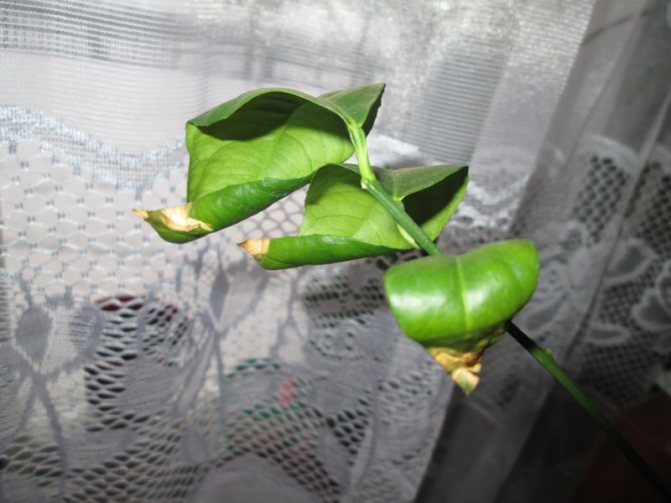

Leaves are curled by the lemon
Another disease is gommosis. Signs of the disease include the release of yellow resin from cracks in the bark, the dying off of the bark and the appearance of longitudinal spots on the leaves. All affected areas are cut off. Places of cuts are sprinkled with wood ash, or treated with copper sulfate and smeared with garden pitch.
Pests of indoor lemon and the fight against them
It is impossible to prevent the attack of harmful insects. They are prone to rapid reproduction and the desire to destroy the plant. Regular inspection of trees is important to prevent their rapid spread throughout the plantings.
Root aphid
A small insect, whose place of residence is the root system, damages the plant, which, due to the activity of the pest, is not able to fully receive nutrients.
When the root aphid appears, signs of lemon death appear: the fruits and ovary fall off or do not develop, the leaf plates curl.
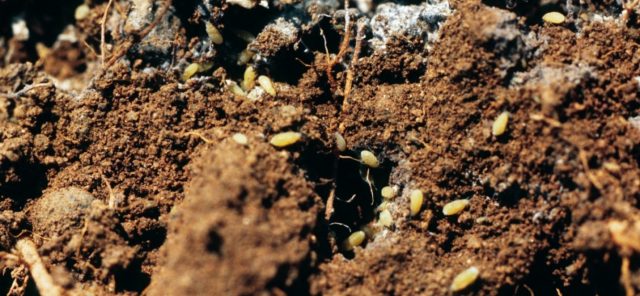

To get rid of aphids, it is important to regularly destroy weeds that have a beneficial effect on the reproduction of the pest.
It is recommended to destroy damaged plants, or, if the disease is detected early, treat the lemon with insecticides Akarin, Fufanon or Guapsin. As a result of spraying, aphids are paralyzed, and they die.
Important! Among the folk recipes for root aphids, there are tips to disinfect the soil with alcohol. It is forbidden to carry out this procedure in relation to lemon: the tree does not tolerate alcohol.
Common aphid
Among the diseases and pests of home lemon, aphids are the most common occurrence. The result of its vital activity is the destruction of leaf plates. The insect damages their lower part, gradually moving upward, sucking the juices. Castings dry up and fall off.
To get rid of aphids, the affected shoots are cut off, after which a complex fertilizer is applied to the soil. In case of a massive pest attack, the lemon is irrigated with an insecticide or garlic infusion. To prepare the latter, 4 heads of garlic are poured into 5 liters of water and insisted for a day. The finished solution is sprayed onto the plant.
Shield
The pest appears on the lemon, which is grown at home, penetrating from the street. It is brought with flowers or fruits contaminated with soil.
The scale insects are very small and move quickly, so it is difficult to see them. With a massive accumulation of the parasite on the leaves, you can see the tubercles of a brown hue. As a result of the vital activity of the scale insect, yellowish spots remain on the leaves.
Among the mechanical methods of getting rid of the pest of indoor lemon, it is recommended to clean the tree of insects with a cotton pad dipped in alcohol. As a chemical treatment, drugs Aktara or Actellik are used.


Spider mite
This insect is an almost invisible representative among the diseases and pests of indoor lemon. The size of a tick does not exceed 2 mm, it can be seen through a magnifying glass.
The pest feeds on plant sap, living on the underside of the leaves. In the course of its activity, the shoots dry out. Yellow spots and cobwebs can be found on the sheet.
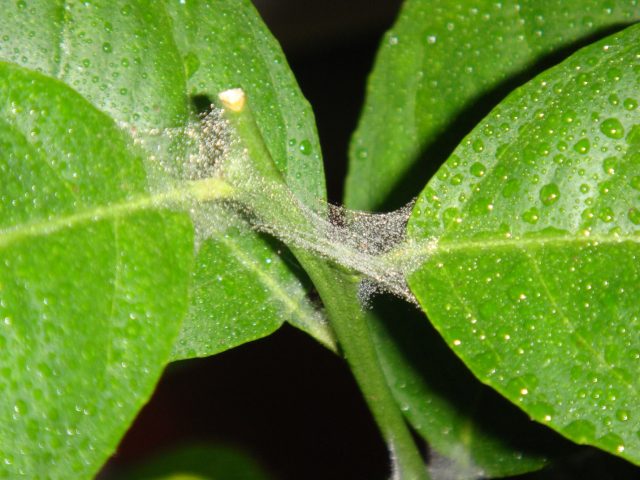

Common chemical treatments for spider mites include:
- Demitan;
- Fitoferm;
- Actellic.
Among the folk methods, it is recommended to use a soap solution, which is used to wipe each leaf of lemon, then the pot and all nearby surfaces.
How to treat lemon from pests
Taking preventive measures against insects is one way to protect a lemon.
It is recommended to shower the wood with soap and water once a month. Before the procedure, the soil in the pot is covered so as not to damage the root system.
Contributes to the prevention and elimination of pests of indoor lemon mustard solution. The powder is poured with 1000 ml of water and insisted for 72 hours, after which the tree is treated. Before the procedure, the product is diluted with 3 liters of water.
Effective against pests and tobacco infusion with soap. For its preparation, 50 g of tobacco is poured with 1000 ml of boiling water and infused for 24 hours, after which it is boiled for half an hour, cooled. Add 1 liter of water and 1 tablespoon of soap shavings to the solution. The resulting product can be used for spraying or rinsing.
Leaves are falling off a lemon - what to do
If the leaves of lemongrass begin to fall off, you don't need to panic right away. This can happen for quite natural reasons. Every plant changes its leaf cover, and citrus fruits are no exception.
Kalanchoe diseases - causes and treatment
Reasons why lemon sheds leaves:
- lack of sunlight;
- improper watering (both excess and lack of moisture negatively affect);
- low or too high room temperature;
- lack of nutrients in the soil;
- Malsecco's disease and gommosis.
The reasons why a lemon sheds its leaves, what to do in this case, depends on how often and in what quantity it sheds. If this is a mass phenomenon, then you need to find out why this is happening.
Although lemon is native to hot tropical countries, direct sunlight is detrimental to the plant. It is better to put the pots in a place where there will be diffused light.
Attention! In the fall and winter, citrus may lack sunlight. Because of this, he can throw off foliage. Starting in October, you need to turn on lamps with additional illumination in the evenings for several hours.
The soil should be watered as soon as the top layer is dry. If the soil is poured, it will become dense and oxygen and nutrients will not flow to the roots. This leads to the death of the roots.
The optimum temperature at which the citrus will feel comfortable is + 18- + 20 degrees. In the warm season, if possible, the pot can be taken outside or on the balcony.
In addition to improper care, lemon can be thrown off the foliage due to disease. With Malsecco's disease, the leaf plate first acquires a red-orange hue, and then dies off. In this case, the petioles remain on the branches. It develops mainly in spring or autumn. There is no cure for Malsecco.
Signs of lemon infestation
External symptoms of plant damage with a scabbard are a slowdown in the growth of shoots, the leaves become smaller, turn yellow, and fall off. A close examination of the lemon reveals smooth brownish-greenish growths (up to 4 mm) on the trunk, on the inside of the leaf.
The scabbard on lemon is a dangerous sucking pest, it feeds on plant juice. She lays eggs under the shell. In a few months, one insect gives two generations of larvae (up to 100 individuals), which crawl over the lemon, move to other indoor plants.
Discharge of scale insects - sweet, sticky pad, covering the surface of leaves, shoots, topsoil. The glue closes the stomata of the leaf plate, preventing the plant from breathing.
Sticky coating on lemon leaves
Diseases of roses - treatment and pest control
Sticky plaque is not always a sign of illness or the appearance of a pest. It is possible that plaque stands out due to improper watering. In the natural environment, sticky plaque appears to attract ants, which, in turn, destroy pests on the tree. If a sticky coating appears on homemade citrus fruits, do not panic right away.
Pests of indoor lemon, due to which a sticky coating appears:
- shield;
- aphid.
The scabbard is dangerous because, if it is not noticed in time, the citrus will die. If a sticky bloom appeared on the tree, the plant began to dry out, and specks appeared on the foliage and stems, then this is a scale insect. Treatment with Fitoverm and Aktara preparations helps from the pest. For the complete destruction of the pest, 3-4 treatments are required with an interval of 2 weeks.
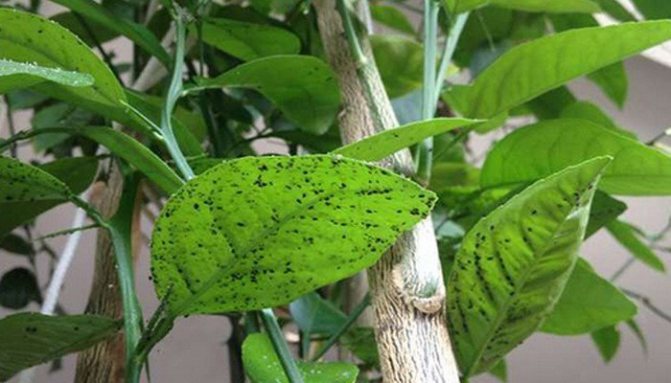

Aphids on citrus
The second cause of sticky plaque is aphids. Finding a pest is not at all difficult. These are small green bugs that can be seen both on the foliage and on the rest of the plant. To destroy the pest, every day for a week, citrus is sprayed with a solution of laundry soap. You can also use garlic water. You need to spray every day for 5 days.
Whitefly and its larvae.
Tiny white flies live on the inside of the leaf, but they do not bring harm, but the larvae that emerge from the eggs. They are very prolific and a lot of them appear in a short time.
Sucking the juice from the plant, they drain the lemon, the plant sheds the ovaries. Poisonous substances are released, and a fungus develops. The appearance of the tree deteriorates, it grows overgrown with white spots, the leaves fall off.
This is a very serious pest and difficult to get rid of. As a fight against it, hang stickies near the lemon and rinse all the eggs from the tree with water.
Washing with tobacco tincture or ash solution will help to get rid of whitefly. It is recommended to use special preparations.
Yellow spots on lemon leaves - what to do
Yellow spots are a common symptom of most illnesses. In order to accurately determine the cause of their appearance, you need to pay attention to other signs.
Diseases of clematis and their treatment - what flowers are sick with
Why do the leaves of indoor lemon turn yellow:
- hypothermia;
- lack of magnesium or zinc;
- fungal, bacterial and viral diseases (cancer, root rot);
- the appearance of insects.
Yellow spots appear due to the scabbard. The control of these pests has been described in another section.
The second factor is hypothermia. Lemon is a very thermophilic plant and a sharp drop in temperature never goes unnoticed. If the temperature in the room drops below +14 degrees, you need to either turn on the heater or move the citrus to a warmer place.
Important! Lemon does not tolerate frequent pot changes. This tree may even die from this.
You can determine which mineral is lacking in citrus by the location of the spots. If the tips dry, then there is a magnesium deficiency in the soil. If yellow spots appear near the veins, there is not enough zinc in the soil.


Lemon scab
Diseases from which yellow spots appear:
- Cancer. An incurable disease in which dark brown spots with a yellow border appear. In this case, the plant must be thrown out immediately so that other crops do not get cancer.
- Root rot. You need to trim off all affected areas, then transplant the citrus into another pot with new soil. After that, apply mineral fertilizers.
- Scab. On the underside of the leaf, small warts appear of a pink-yellow or brown hue. The affected areas of the lemon are cut off. The plant itself is sprayed with copper oxychloride or copper sulfate.
Viral diseases of lemons
Viral diseases affecting the leaves are incurable. The external signs of viruses are similar to the consequences of improper agricultural practices - most often the tree slows down in growth, the stems are bent, the leaf plates lose their rich color and deform.
Tristeza
Tristeza is dangerous not only for lemon, but also for other citrus fruits.
The virus is characterized by the presence of a large number of strains that provoke individual symptoms, manifested singly or in different combinations.
The characteristic features of the Tristeza virus include:
- Whitening of veins on leaf plates. Both individual areas and all veins can lighten, subsequently the green mass turns pale and falls off.
- Yellowing of plant parts, massive leaf fall and stunted growth.
- Corrosive changes in trunks and wood. Their shape is quite specific and resembles longitudinal grooves or honeycombs, which are easy to see under the bark.
- Uneven contour of the cut of the affected shoots and trunk.
Tristeza is capable of destroying a lemon tree in a short time, while the virus is transmitted from a sick plant to a healthy one at lightning speed.
To avoid contamination of all domestic trees, complete destruction of the diseased lemon is recommended.
Sheet mosaic
Leaf mosaic is another group of viruses attacked by homemade lemons. The disease mainly affects the leaves and fruits of the culture, subsequently they acquire a characteristic mosaic color.
Greenish or white spots of different intensity acquire different shapes and sizes, but inevitably lead to deformation of the green mass and inhibition of growth.
The first signs of leaf mosaic can be seen on young leaf blades:
- The veins brighten, specific rings of a light yellow hue, star-like formations appear.
- The spots change their hue to greenish, merge, provoking the blanching of the entire leaf.
- The green mass becomes smaller, the lemon stops growing and looks weak.
The leaf mosaic virus is transmitted through sap, seeds and contact of a sick plant with a healthy one.
The most common vectors of the disease are aphids, ticks and nematodes that live in the soil, but the disease can persist in inventory or infected plant debris.
Preventive measures will help to significantly reduce the likelihood of infection with leaf mosaic:
- Lemon content in a room at a temperature not higher than +30 degrees.
- Elimination of sharp temperature fluctuations.
- Regular pruning of the tree, removal of any suspicious branches, loose arrangement of pots.
- Timely treatment of the culture when insect pests appear.
There are no ways to combat leaf mosaic, but in the case of a slight damage to the tree, diseased areas can be cut out, preventing further spread of the virus. It is recommended to discard running instances immediately.
Citrus Cancer
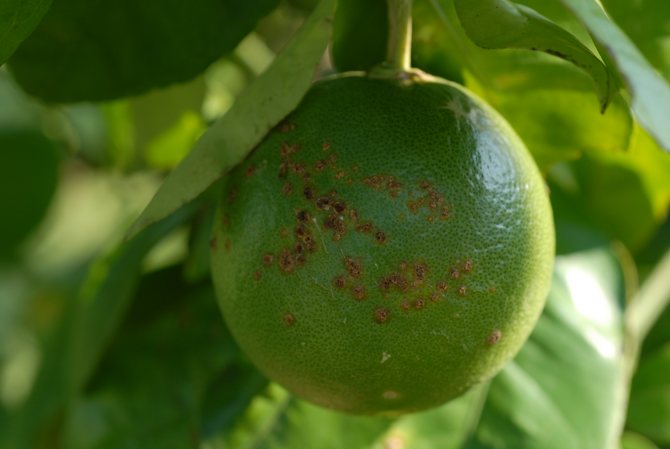

Citrus cancer is a dangerous disease, which homemade lemon can be infected through the stomata of the leaves or through mechanical tissue damage.
The infection can be identified by a characteristic symptom - small dark brown spots, visually similar to tumors. Each such formation is surrounded by a yellow halo, inside there is a small depression.
Leaves and shoots are the first to suffer from cancer, and as the disease spreads, the formed ovary is also affected. The infection affects only the skin of the fruit, but they still do not have time to fully ripen and fall off.
The lemon slowly dies, shedding infected leaves. Advanced citrus cancer manifests itself in bulging formations on the bark of the trunk, as well as the gradual death of branches. There is no way to treat the virus, so it is recommended to dispose of the diseased lemon tree.
Lemon leaves dry
Description of the reasons due to which the tips of the leaves dry:
- dry air;
- low or high room temperature;
- the use of tap water for irrigation;
- too dense soil in the pot;
- waterlogged or overdried soil.
If the end of the leaf dries due to dry air, then you need to increase the humidity in the room. Next to the citrus, you can put a cup of wet expanded clay, regularly spray the tree and wipe the leaves, or buy a humidifier for your home.
Note! Drying of the tips is also accompanied by yellowing of the foliage.
It is not recommended to use tap water for irrigation. It contains a lot of fluorine and chlorine, so it is too hard. Better to use purchased and rainwater or melted snow. You can also boil, and then settle the tap water. Before watering, add a few drops of lemon juice or a little citric acid to it to soften.
If the soil in the pot is compacted, you need to transplant. In order for the lemon to grow normally, transplants are carried out once every 2 years. If necessary, the lemon can be replanted every year. Regular transplants will help revitalize the citrus.
Also, the edges can dry out due to improper watering and temperature violations. In summer, waterlogging of the soil should not be allowed, and in winter it is not allowed to dry out.
Worms.
These insects look like large aphids, they multiply rapidly and can quickly occupy the entire lemon tree. The leaves turn white from plaque, the worms feed on the sap of the plant. Having found these pests, it is urgent to destroy them.
Prevention of nematodes. These pests live in the soil at the roots of the plant; they are very small worms.They exist due to the juice of the roots of the lemon, they harm the roots and the aerial part of the plant also suffers, it does not grow and does not bear fruit. To get rid of them, you need to disinfect the soil.
Fighting lemon pests is not easy, try to prevent them from appearing in your apartment. Systematically inspect the lemon, rinse the lemon leaves with running water, hold the purchased bouquets of flowers and new plants for some time not in the same room with the lemon
Lemon leaves have white spots
The reason for the appearance of white spots on the leaves of lemon is powdery mildew. It is not difficult to treat this disease if it is detected at an early stage. The disease can affect both old and young lemons.
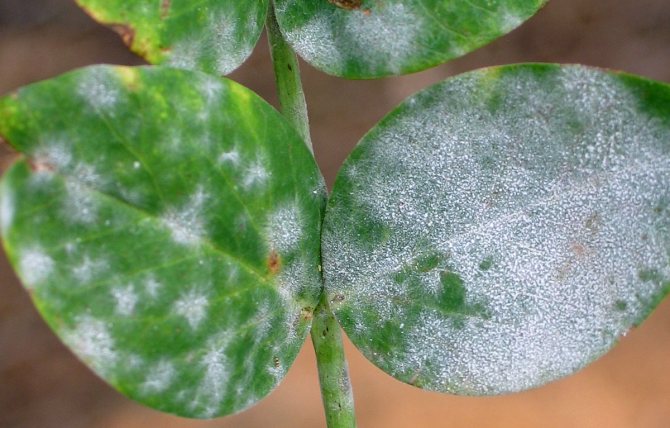

Powdery mildew
As the fungal disease progresses, the symptoms change. At first, the leaves turn yellow and curl, then a white bloom appears. The plant stops developing. New shoots do not appear, old foliage falls off. In order to prevent the development of the disease, lemons are regularly taken out into the fresh air in summer, and in winter the room is ventilated several times a week.
If powdery mildew does appear, you need to immediately start treatment. The affected leaves are immediately cut off and discarded. The rest of the plant is sprayed with fungicides (for example, Skor or Horus). Copper sulfate treatment is also effective.
Shield.
Small round-shaped insects, very mobile and quickly moving through plants. They attach along the veins of the leaf, secrete liquid and form a shield from it that protects them from chemicals, so it is very difficult to fight them. Leaves turn yellow, become lethargic.
You can use folk remedies: an oil-water emulsion is applied to all leaves and trunks and after treatment is washed off with water, smear the leaves with garlic gruel and rinse off after an hour, spraying with a decoction of hot pepper.
Why lemon does not bear fruit
Reasons why lemon does not bear fruit:
- Wrong vaccination. If the plant was grown from a seed, it will never bear fruit. Lemon can be grafted onto other varieties of lemons, orange or grapefruit.
- Temperature violations. If the vaccination was carried out successfully and the tree bloomed, and then all the inflorescences fell off, then the problem is in the air temperature. The most favorable temperature is 23-25 degrees.
- Low humidity level. The humidity level in the room should be 70-80%.
- A large number of inflorescences. If there are many inflorescences on a tree, they take a lot of energy from it and, as a result, fruits do not form from any flower. You need to immediately pick off small flowers.
- Lack of nutrients in the soil. As soon as the lemon began to bloom, fertilizers for citrus plants are applied to the soil.
Important! In order for a lemon to bloom, it needs conditions as at home in tropical forests: high humidity, a lot of diffused sunlight and regular fertilizing with complex mineral fertilizers.
How to plant a lemon?
A seed-grown lemon will most likely not bear fruit if not grafted. For, to get a citrus harvest you need:
- Cut off the scion just before grafting. It is better to do this between April and August.
- Trim the scion length 6 cm and remove all leaves except the top ones - leave about 4 sheets
- Make a cut from the top about 1 cm length and process the cut with a garden pitch
- Cut off half of each leaf on the scion, tie it to the stock with a tape, and place it under a glass tank or a large plastic bottle
- Through 2 weeks check how the grafting was started - whether the trimmed leaves come off easily


In order for a tree to bear fruit, it must be properly grafted.
If the leaves begin to fall over time, then this is a clear sign that tree grafting was successful and you can slightly loosen the tape with which you tied the scion and rootstock.
Usually such lemon grafting methods are successful and already a year after such a procedure You will see the first, unusually smelling white flowers, from which a delicious citrus fruit will grow over time.
Preventive measures
To prevent the appearance of diseases and pests on this exotic plant, the gardener requires not only compliance with agrotechnical rules, but also the provision of competent care. First of all, such measures should be aimed at increasing the immunity of the plant and its resistance to infection.
It is possible to prevent chlorosis (imbalance in the distribution of chlorophyll), to activate the growth and development of a plant, using the following composition in the diet of a house tree:
- ammonium nitrate - 15 g;
- iron vitriol - 3 g;
- boric acid - 5 g;
- potassium sulfate - 15 g.
The dry mixture is dissolved in 10 l of water. Lemons are watered with a nutrient solution no more than once every 5 months.
This composition protects indoor citrus fruits from fungal, viral and infectious diseases. It gently stimulates the healthy development of plants.
In the process of growing lemon, it is important:
- regularly check for diseases and parasites;
- to provide the culture with timely care and the necessary conditions of detention;
- carry out regular moistening of the crown: irrigate daily, take a shower once a month;
- every month, for the purpose of disinfection, treat the crown with soapy foam.
Treatment of fungal diseases
1.1. Anthracnose
This disease, caused by pathogenic fungi, is most often found in greenhouses and greenhouses, but if the apartment is humid and too warm, and there is not enough phosphorus and potassium in the soil, it can also appear on indoor lemon. Initially, anthracnose manifests itself by the appearance of dark brown spots on the tips of the leaves. If the disease is started, the plant loses its foliage, ovary, fruits, it has necrosis of shoots, gum flow, which often leads to the death of the entire aerial part of the tree.
In the early stages of the disease, lemon can be saved. It is necessary to remove the affected parts of the plant, and then spray with fungicides. Such drugs as Fitosporin (20 drops per 0.5 l of water) and copper oxychloride (4 g per 1 l of water) have proven themselves quite well. Bordeaux liquid is more powerful in its effect (3-4 grams per 1 liter of water). The interval between spraying is at least 7 days. The treatment is carried out several times, depending on the degree of damage to the disease, according to the instructions. Sometimes 3 times are enough.
1.2. Powdery mildew
The disease is characterized by the following symptoms: the appearance on the leaves of a white, flour-like plaque, a slowdown in the growth of a tree, yellowing and twisting of the foliage. Powdery mildew is fought by repeatedly spraying plants with 3-4% Bordeaux liquid, a solution of copper sulfate (5 grams per 1 liter of water) or other fungicides. For prophylaxis, it is recommended to treat lemon with Fitosporin (in accordance with the instructions). It should be noted that indoor lemons rarely get sick with powdery mildew.
1.3. Scab and wart
With scab disease, any part of the plant can become covered with raised spots. Over time, instead of them, holes appear on the leaf blades, and the branches and fruits crack at the lesions. Wart also appears as spots that later develop into pink-gray warts. They gradually increase in size, turning into growths that can appear on leaves, shoots, fruits, leading to their death. The disease causes the ovaries to fall off.
The fight against scab and wartiness begins with the removal of the affected parts of the plant, and then the tree is repeatedly sprayed with fungicides: solutions of Bordeaux liquid, copper or iron vitriol, copper oxychloride (according to the instructions).Drugs such as Cuprozan or Strobilin are also suitable.
1.4. Sooty fungus (rabble)
The appearance of a sooty fungus, a type of mold, is provoked by harmful insects: aphids, scale insects, scale insects, etc., emitting a sticky sweet substance. Therefore, first of all, it is necessary to fight with them. The mob spoils the appearance of the lemon, weakens it, since the dark plaque covering the stems, trunk and leaves interferes with photosynthesis, as a result of which the plant slows down its development. Soot fungus is removed with napkins, tampons, a soft toothbrush, using warm running water. Insects are removed along with the plaque. After this procedure, the plant should be treated with insecticide preparations that are suitable for the destruction of a particular pest.
1.5. Late blight
This disease is most often affected by lemons grafted onto an orange. Plants can become infected through the air from carriers of fungal spores such as eggplants, tomatoes, peppers while cutting vegetables. Late blight shortens the life span of a tree, provokes the death of its individual parts, appearing on the root collar, trunk, branches, roots, buds, ovaries, fruits and leaves.
The disease is quite difficult to treat, especially if it spreads to the bark. Dark watery spots appear on it, which then swell and crack. Gum begins to stand out from the wounds; when it gets into the ground, it smells unpleasant. Late blight can also lead to decay of the root system. On the shoots, the disease manifests itself in the form of spots, at first small and light, and then acquiring a light brown color and growing along the branches (from the tops to the trunk). Cracks appear on the surface of the spots with gum oozing from them. Affected shoots gradually die off.
On leaf blades, late blight manifests itself as oily spots (closer to the top of the leaves). Over time, they turn brown and increase in size, covering the entire surface of the leaf; a white-gray coating may appear on the underside. If the disease affects buds or ovaries, rot will form on them. Affected fruits turn brown, acquire an unpleasant odor and gradually dry out.
The appearance of the disease is facilitated by high air humidity (more than 90%) at a temperature of + 18-20 degrees. Lemon is saved by removing diseased parts of the plant and spraying it with fungicides containing copper (for example, a solution of copper sulfate - 1 tsp for 2 liters of water), or with drugs such as Albit, Profit, Ordan and others. When pruning shoots or roots, grasp 10-12 cm of healthy wood. Places of cuts are treated with a 10% solution of copper sulfate.
Plant pests
Shields
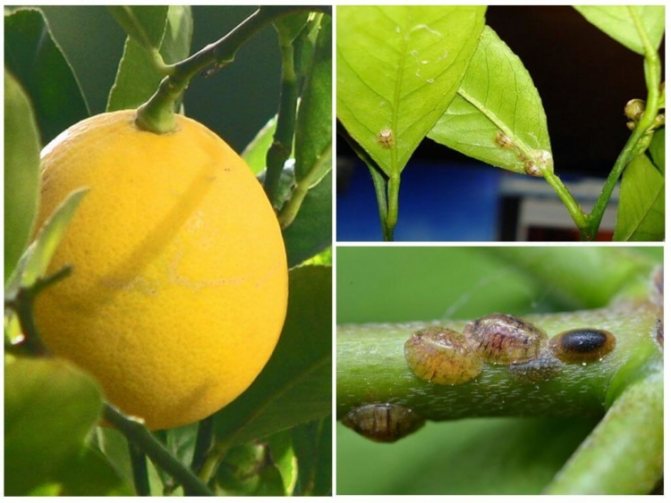

The scale insects feed on the sap of the leaves of the plant. It settles on the back of the leaves. Despite its small size, it is visible to the human eye. The bottom of the leaves should be carefully examined to prevent the appearance of the parasite. Insecticides (for example, diazinon) are used to destroy the scale insects.
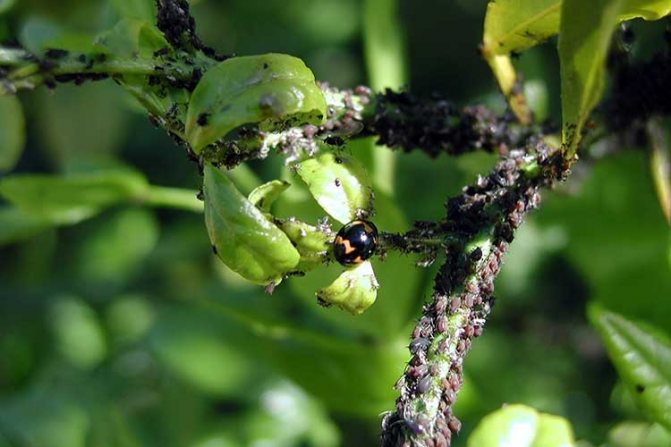

Aphids settle on young shoots that have not yet been covered with bark. The pest first affects the bottom of the leaf, then moves higher, simultaneously sucking the juices of the plant. As a result, the leaf curls up and dies.
You can fight aphids by cutting off the affected parts of the plant, if the parasite has not yet spread. Otherwise, you will have to resort to using an insecticide or infusion of garlic (4 heads are soaked for a day in 5 liters of water). After spraying, most of the insects die.
Mealybug
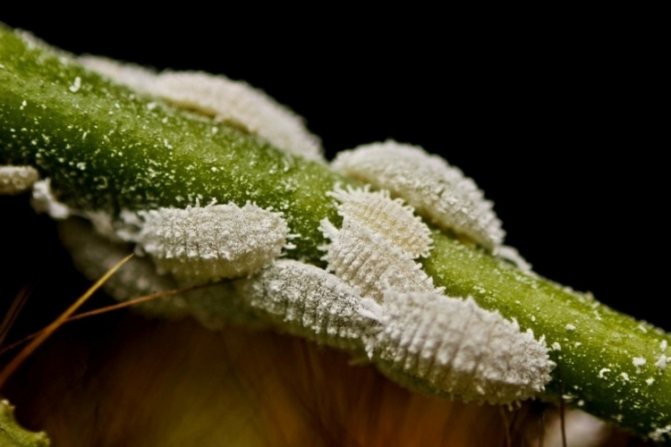

Mealybugs are close relatives of the scale insect. They are clearly visible on the plant even with the naked eye - their clusters resemble cotton wool lumps. Depending on the species, pests affect the leaves and root system of the lemon, slowing growth, causing yellowing and curling of the leaves.
If untreated, the plant may die. To combat the worm, chemical preparations (Fitoverm, Actellik) or alternative methods (for example, garlic infusion) are used.
How to understand that the plant is missing something and needs to be treated?
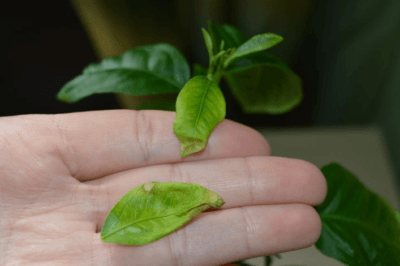

The plant is quite whimsical and will quickly make it clear that mistakes have been made in caring for it, or an infection has joined. You can suspect that a lemon is feeling unwell by the following signs:
- a white or transparent sticky bloom forms on the leaves (the symptom indicates the presence of parasitic insects);
- leaves turn yellow or turn brown (both due to illness and as a result of care errors);
- dots or spots appear (with sunburn and infection);
- the tips of the leaves dry (from disease, damage to the root system or improper watering);
- leaves curl (as a result of improper care or infection);
- lemon drops leaves (can be both a reaction to changes in conditions of detention, and a sign of a serious illness).

